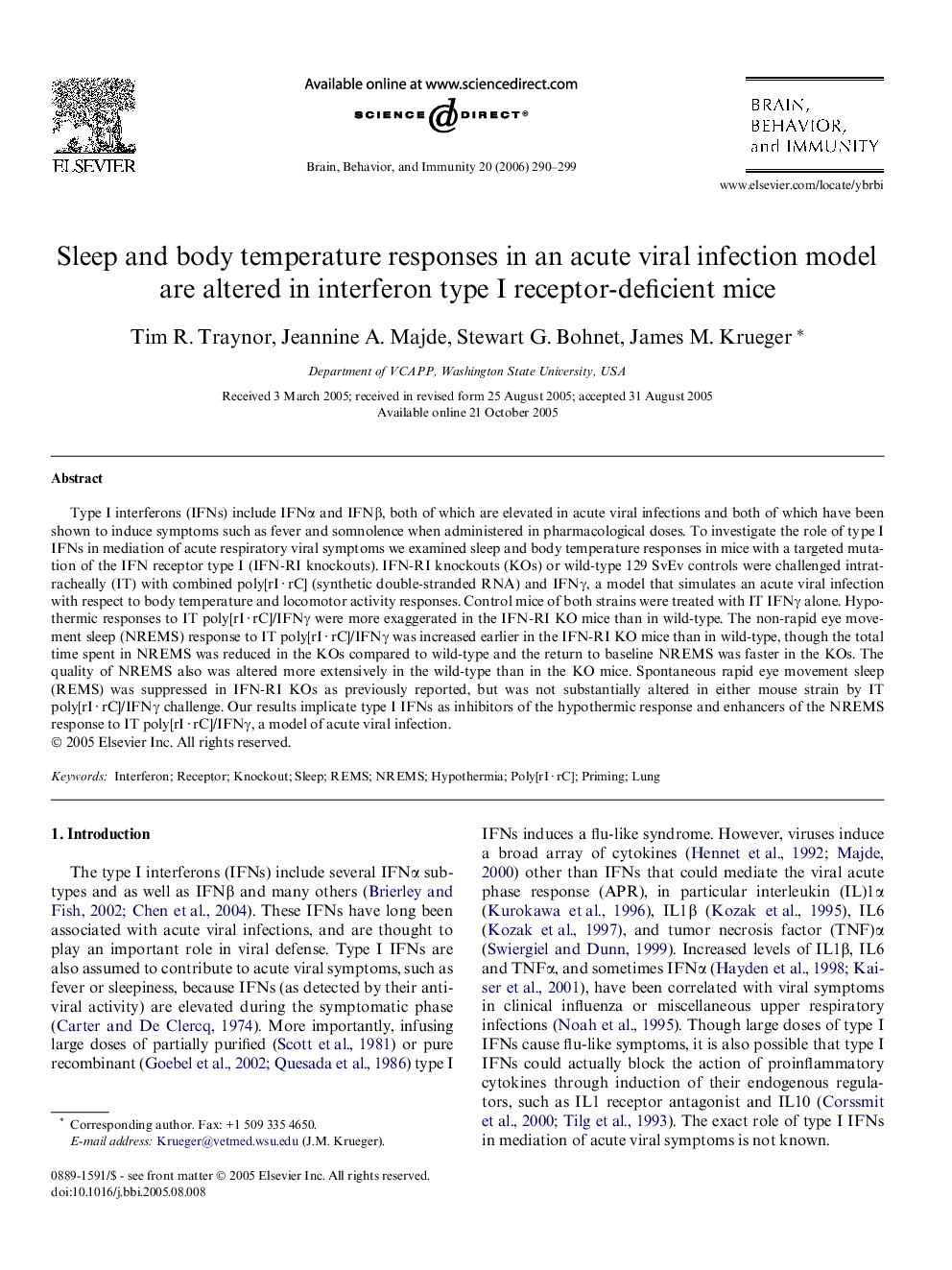| Article ID | Journal | Published Year | Pages | File Type |
|---|---|---|---|---|
| 923804 | Brain, Behavior, and Immunity | 2006 | 10 Pages |
Type I interferons (IFNs) include IFNα and IFNβ, both of which are elevated in acute viral infections and both of which have been shown to induce symptoms such as fever and somnolence when administered in pharmacological doses. To investigate the role of type I IFNs in mediation of acute respiratory viral symptoms we examined sleep and body temperature responses in mice with a targeted mutation of the IFN receptor type I (IFN-RI knockouts). IFN-RI knockouts (KOs) or wild-type 129 SvEv controls were challenged intratracheally (IT) with combined poly[rI · rC] (synthetic double-stranded RNA) and IFNγ, a model that simulates an acute viral infection with respect to body temperature and locomotor activity responses. Control mice of both strains were treated with IT IFNγ alone. Hypothermic responses to IT poly[rI · rC]/IFNγ were more exaggerated in the IFN-RI KO mice than in wild-type. The non-rapid eye movement sleep (NREMS) response to IT poly[rI · rC]/IFNγ was increased earlier in the IFN-RI KO mice than in wild-type, though the total time spent in NREMS was reduced in the KOs compared to wild-type and the return to baseline NREMS was faster in the KOs. The quality of NREMS also was altered more extensively in the wild-type than in the KO mice. Spontaneous rapid eye movement sleep (REMS) was suppressed in IFN-RI KOs as previously reported, but was not substantially altered in either mouse strain by IT poly[rI · rC]/IFNγ challenge. Our results implicate type I IFNs as inhibitors of the hypothermic response and enhancers of the NREMS response to IT poly[rI · rC]/IFNγ, a model of acute viral infection.
